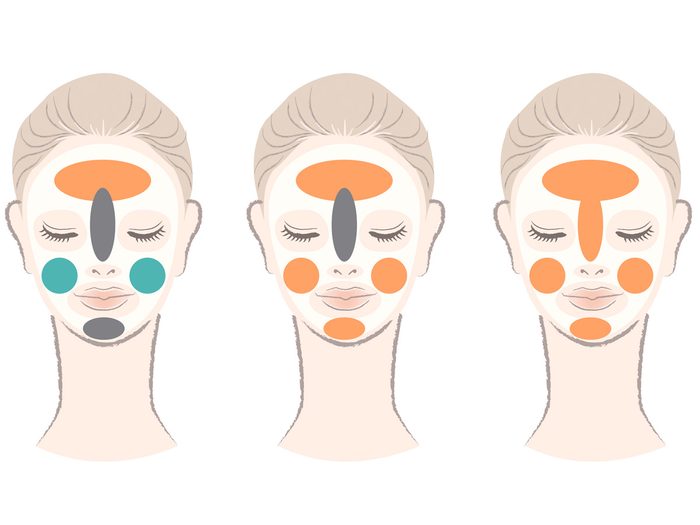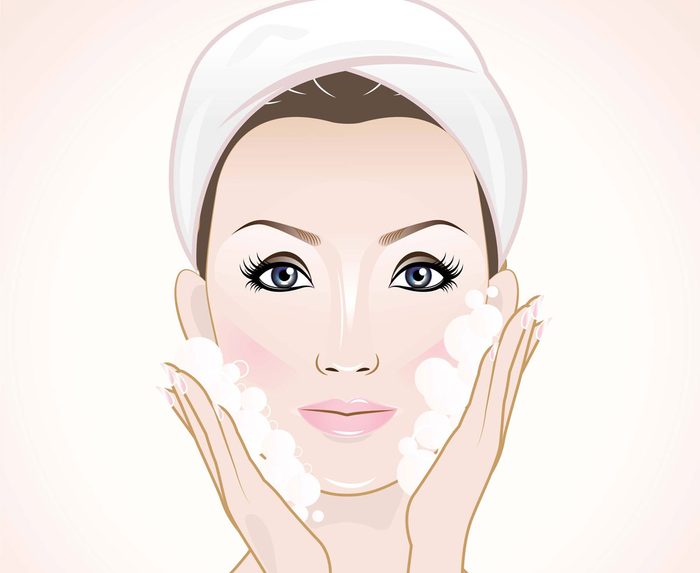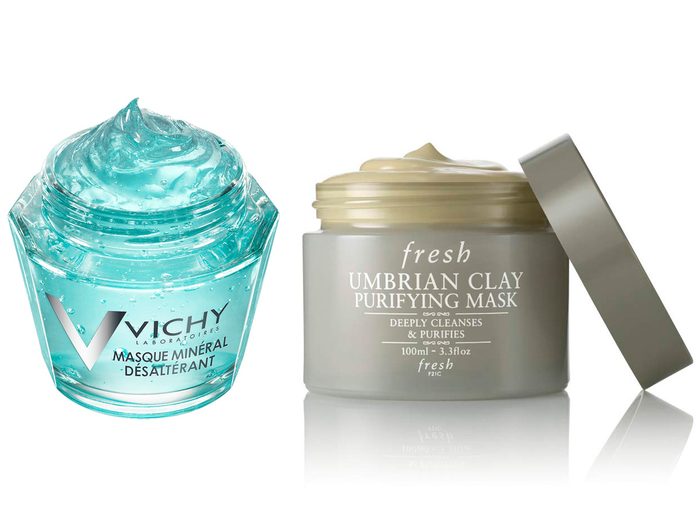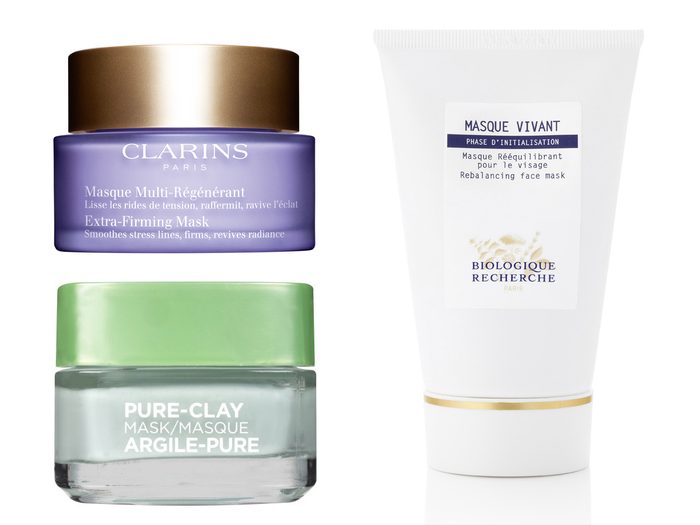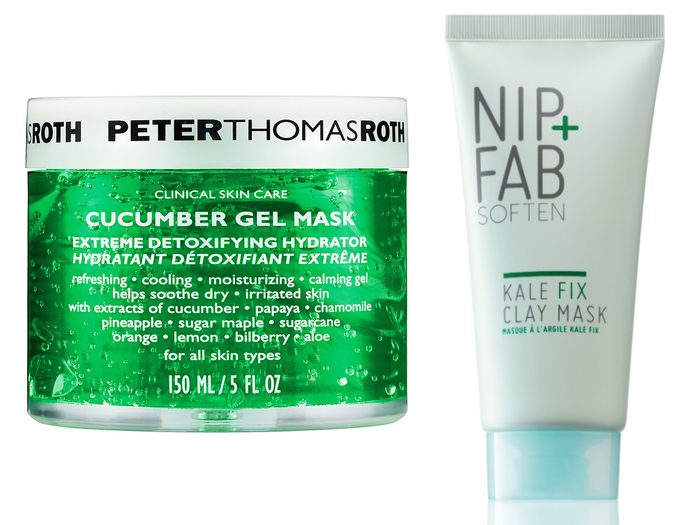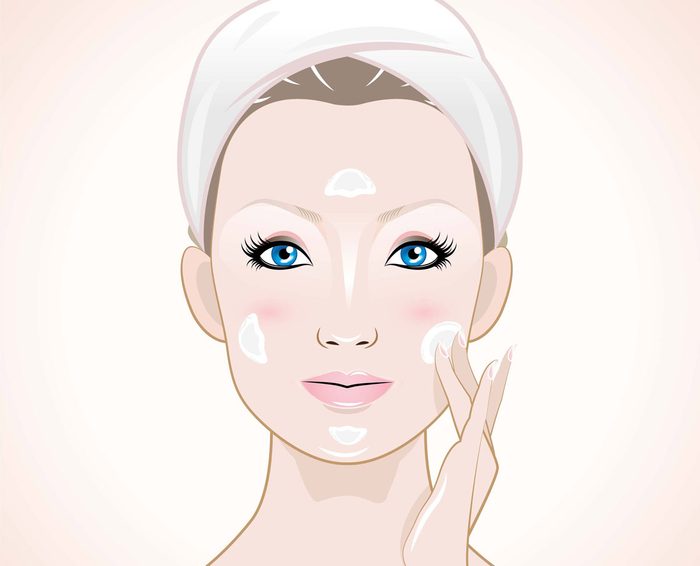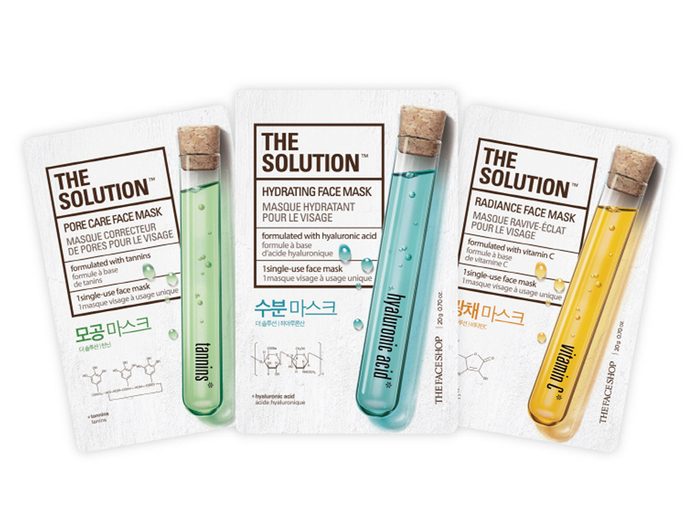Multi-masking: What is it and why bother?
Once upon a time, standard masking practice meant smoothing a generic cream or gel formula over your face one evening a week, letting it soak in, and then scrubbing it off. But times have changed. Now, there are more masks available than ever, each with a unique blend of concentrated ingredients that are better at treating specific skin concerns such as dullness, blemishes, dehydration, congested skin or fine lines.
“Skin care isn’t a one-size-fits-all solution for women,” says Pia Ghosh, L’Oréal Paris senior brand manager for skin care. “Especially in Canada, there are different seasons and a smorgasbord of ethnicities. Multi-masking is really cool because it allows you to create a customized solution to address your specific skin needs, area by area.” For best results, women are applying two or more masks to different areas to target competing concerns – for example, dry cheeks and an oily T-zone.
How to prep your skin
To allow for optimum penetration of the masks, remove all makeup and cleanse skin using lukewarm water to soften up the pores, says Ghosh. Next, exfoliate. “If you have a lot of dead skin on the surface of your face, it’s not going to allow the mask to penetrate fully,” says Shana McChesney, a regional trainer at Hand & Stone Massage and Facial Spas Canada. She suggests choosing a chemical exfoliator, which uses natural acids to remove buildup on the face. “If you want to combat oily skin, then I suggest a salicylic acid exfoliator. If you have dry or sensitive skin, then try lactic acid. And if you’re looking for anti-aging benefits, use glycolic acid.” Some exfoliators use a mix of these ingredients.
Mask combo 1: For combination oily/dry skin
If you find that your skin seems to be oily in your T-zone and dry or flaky on your cheeks, look for a purifying or mattifying clay mask and pair it with a cream or gel mask that targets hydration. Apply a thin layer of each mask in the areas needing treatment (e.g. Fresh Umbrian Clay Purifying Mask on T-zone and Vichy Quenching Mineral Mask on the rest of the face) and don’t forget your neck! “A lot of women tend to leave their neck area out when masking, and the neck is usually the first to show signs of aging because the skin is thin,” says McChesney. If you’re using an anti-aging mask or one for soothing or hydration, apply it to your neck and décolletage as well.
Follow the directions when it comes to amount of time the masks should sit. “If the instructions say to leave a mask on for five minutes, don’t go over that time thinking you’ll get more from the mask,” says Mara Vezeau, Vichy Canada integrated communications and medical relations leader. “You may end up doing more harm than good. For example, clay masks aren’t meant to dry hard on the skin, as this can cause them to dehydrate your complexion.”
Vichy Quenching Mineral Mask, $34, vichy.ca
Fresh Umbrian Clay Purifying Mask, $75, sephora.ca
Mask combo 2: For aging skin that still breaks out
The major signs of aging – dullness, loss of elasticity, fine lines and wrinkles, dilated pores – will come for us all, but many modern women find that they suffer from blemishes and aging skin simultaneously. To combat competing concerns, choose a variety of masks that suit your needs.
Apply the mask that needs to be on the longest first, and then move on to the masks that need less time on the face. For example, if you want to brighten dull cheeks, apply Biologique Recherche Masque Vivant to your cheeks for 15 minutes. After five minutes, apply Clarins Extra-Firming Mask to the rest of your face and neck for 10 minutes, leaving blemished areas open to spot treat with L’Oréal Paris Pure-Clay Purifying and Mattifying Mask for 10 minutes as well. Then you can remove all three masks at the same time.
Clarins Extra-Firming Mask, $65, clarins.com
Biologique Recherche Masque Vivant, $65, kolortwist.com
L’Oréal Paris Pure-Clay Purifying and Mattifying Mask, $20, at drugstores and mass-market retailers
Mask combo 3: For sensitive skin
Suffer from sensitive, irritated skin but still want the benefits of masking? Try Nip + Fab Kale Fix Mask to draw impurities out of blemished areas (say the chin and forehead) and apply Peter Thomas Roth Cucumber Gel Mask to the rest of the face and neck to calm and soothe irritation. Both masks can be left on for up to 10 minutes.
Especially for sensitive skin, beware of masking too frequently. Clay masks shouldn’t be used more than twice a week. Hydrating masks can be used more frequently, but don’t overdo it. “The skin can get irritated,” says McChesney. “It needs time to heal.”
Peter Thomas Roth Cucumber Gel Mask, $64, sephora.ca
Nip + Fab Kale Fix Max, $20, at Shoppers Drug Mart
Mask removal 101 and final steps
When you’re ready to wash off your masks, apply lukewarm water to the face and use your fingers, gauze or cotton pads to remove the masks in circular motions. Be sure to move straight into your regular skin-care routine, which might include toning, moisturizer and eye cream, before you go to bed or go about your day. Try massaging your moisturizer into your skin for additional benefits.
Sheet masks
Multi-masking is great when you’re at home, but if you’re traveling or don’t want to make a mess, sheet masks are the perfect option. Try “The Solution” range from The Face Shop. They’re only two dollars a pop and come in 10 different formulas: moisture, hydration, firming, wrinkle care, nourishing, brightening, toning, soothing, pore care and peeling.
The Face Shop The Solution Face Masks, $2 each, thefaceshop.ca
Interested in more skincare advice? Read on for 20 Things Your Skin Says About Your Health.
